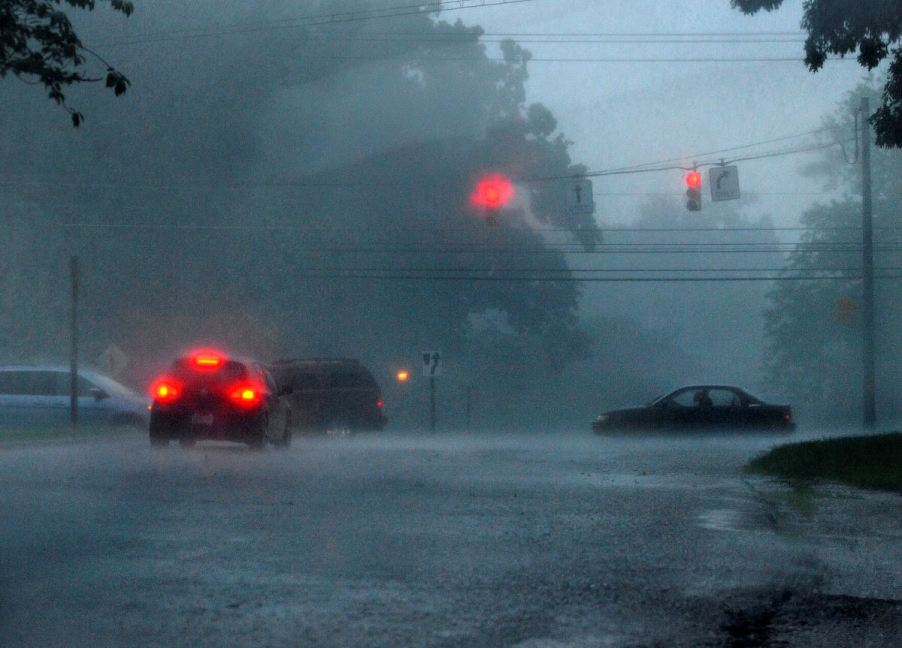
How to Prevent Hydroplaning on Wet Roads in 4 Simple Steps
The rainy season is upon us for many areas, which means wet roadways. This can create hazardous driving situations in the form of hydroplaning. So, what is that, and more importantly, how do you prevent hydroplaning?
Why do cars hydroplane?
In normal driving conditions, your car can accelerate or decelerate thanks to the tire treads making contact with the road. When it begins to rain, even a small puddle can disrupt this, causing your vehicle to lose contact with the roadway. Instead of traveling over a paved road, you’re now riding a film of water mixed with slick oils that the rain has loosened.
This doesn’t just happen when there are large puddles of water. Even small amounts of water can cause your car to skid, so it’s crucial to prevent hydroplaning before it happens.
1. Slow down
When it begins to rain, it’s crucial that you drop your speed. Firestone reports that driving over 35 miles is enough to cause your car to hydroplane. While it may not be possible to drop below this speed, especially if you are driving on the highway, it can help prevent hydroplaning.
2. Allow more distance between cars
It’s never a good idea to ride someone else’s bumper, but it’s even more dangerous when it’s raining. It’s recommended that you leave at least a 3- or 4-second gap between you and the vehicle in front of you.
When the rain begins to pour, you need to drop even further behind. This gives you both time and room to maneuver if you find your vehicle skidding or the car in front of you begins to.
3. Follow the leader
As the car in front of you passes through the water, they displace some of the rain and oil mixtures that have been stirred up. If you are following behind them, you have a brief period of drier road before the water rushes back in.
4. Check your tread
Your tires are one of the most essential tools to prevent hydroplaning. Tires with good tread have better traction with the road in conditions like snow, sleet, and rain. If your tires don’t have enough tread, your chances of hydroplaning are significantly increased.
One method to make sure you have enough tread is to use a quarter. Simply place it in the tread, and roll it over until George Washington’s head is below the tread. If you don’t see any of his head, your tires are in good shape. On the other hand, if you can see his head, it may be time to start saving money for a new set of tires.
Another thing you need to check on your tires is the inflation. You don’t want to have tires that are under or overinflated.
How to stop a hydroplane
Even if you have faithfully followed all four steps to prevent hydroplaning, it may still happen. If you find yourself in this situation, there are four things you can do to stop the hydroplane.
The first is to ease off the gas. This doesn’t mean you immediately slam on the brakes. That’s the last thing you want to do, as it will cause you to skid. Instead, pull your foot off the accelerator, and follow step two.
The next step is to follow the glide. To do this, don’t grasp the steering wheel in a death grip. This can cause you to overcorrect and potentially wreck.
Third, slow down. Now is the time to use your brakes, but do so gently, slowly, and smoothly. This step comes after the vehicle has regained traction with the road and you are no longer skidding.
Finally, pull the car over when it’s safe, and take a moment to relax. Your adrenaline will most likely be pumping, and your heart will be racing. Take a moment to breathe, and allow your body to chill before you continue on your way.



